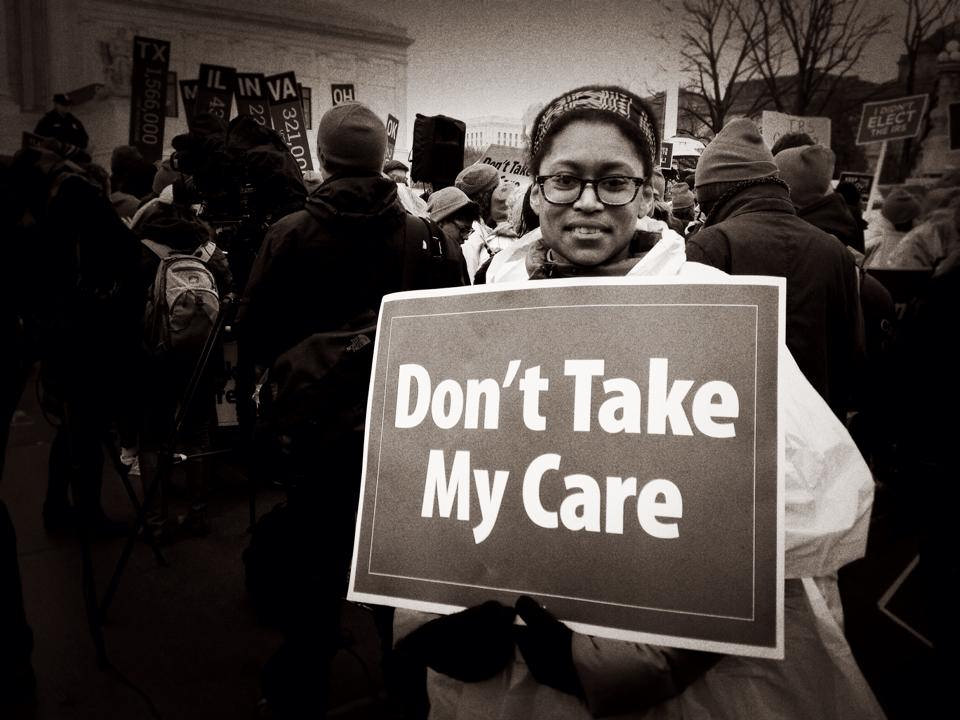
(Photo: Flickr / LaDawna Howard)
International Women’s Day, observed each year on March 8, is supposed to be about celebrating the achievements of women worldwide.
But some of the stories that connect us aren’t a cause for celebration. For example, African-American women share a similar fate as women in India, Latin America, and sub-Saharan Africa — death by cervical cancer.
A recent study found that women of color in America die from cervical cancer at more than twice the rate of white women in America. In fact, they’re dying at rates comparable to those in much poorer developing countries.
Cervical cancer is a preventable disease. So why is this happening?
Part of the problem is that access to that preventative care — regular check-ups at the gynecologist, Pap smears, HPV vaccines — is deeply unequal between white women and women of color, creating a stark racial gap in cervical cancer deaths. According to the Kaiser Family Foundation, 37 percent of Hispanic women and a third of of black women lacked health coverage in 2013 — compared with just 12 percent of white women.
Similar disparities haunt maternal and newborn care. In the United States, black infants die at twice the rate of white infants — a contrast that’s even starker in our nation’s poorest cities. In majority-black Ward 8, D.C.’s poorest neighborhood, the infant mortality rate is a devastating 10 times higher than in the city’s mostly white Ward 3.
And then, sadly, there’s breast cancer. Almost all of us know someone who is fighting or has fought breast cancer. Here again the lack of available quality cancer screenings has resulted in an increased likelihood of death from the disease for black women by no small margin — 40 percent higher when compared to whites.
The story is repeated across all of the top health threats for women: heart disease, stroke, diabetes — the list goes on, and the deaths pile up.
The Affordable Care Act was designed to help narrow these gaps by providing coverage to more people and offering incentives for preventative and primary care providers to reduce such disparities. It identifies preventative care as one of the 10 “essential health benefit” provisions that were designed to level out access.
In 2014, nearly 9 million people gained health insurance through the ACA. According to a study by the Center for Global Policy Solutions, all major racial and ethnic groups reduced their uninsured rate at almost double the rate of white Americans. The gap between Asian American women and white women all but disappeared, the gap between white and black children was eliminated, and the gap between white women and black women decreased by over 25 percent.
In states that didn’t adopt the Medicaid expansion policies in the ACA — mostly GOP-led states in the Southeast — people of color were disproportionately affected. If more red states would’ve adopted ObamaCare, we would’ve been closer to wiping out the racial healthcare gap altogether.
But with Republicans hell-bent on repealing the ACA, now even the modest strides made in increasing healthcare accessibility are in jeopardy.
Marshall Chin, a physician and healthcare ethics professor told “The Atlantic” in 2014, “We actually know a lot about how to reduce disparities. At this point it’s basically about having the national will to make reducing disparities a priority.”
But the GOP and the Trump administration have made it clear that reducing these disparities is not their priority. Their proposed replacement will cover fewer people than are covered under the current healthcare law. Many focus on limiting coverage to “catastrophic” plans, which by nature cannot be preventative.
Millions of Americans of all stripes will lose out if this haphazard effort goes forward. And it’s black women and children who will suffer the most as they, in addition to women around the world, feel the brunt of an assault on their right to live.
